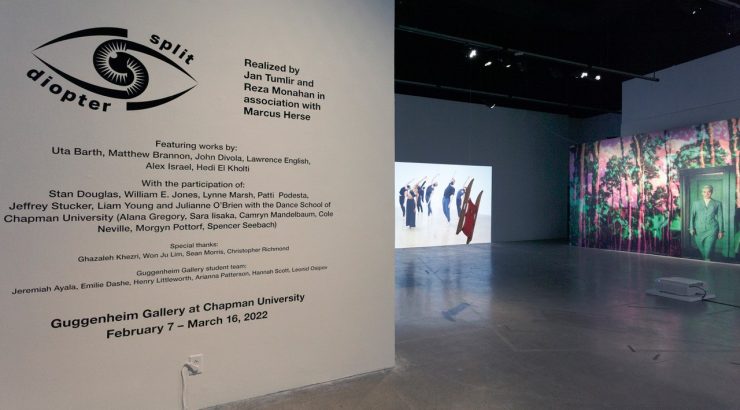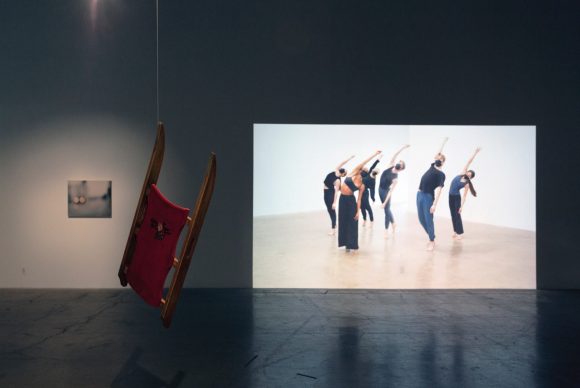
Split Diopter: At the Seam of Art and Cinema
February 21, 2023
Last spring the Guggenheim Gallery presented “Split Diopter” an installation that took over three years to create, which was developed out of a series of conversations
between its three curators—Jan Tumlir (Art History at SCI-Arc), Reza Monahan (SCI-Arc Channel Producer/Director), and Marcus Herse (Guggenheim Gallery Coordinator)—concerning the relations of fine art and cinema.
The principal question they attempted to engage with their show is, “how do advancements in technical optics impact creative practices?” This question was further explored in a second project, a documentary, with a range of artists that work with moving-image media.
“Creative practices, as much as technical optics, are ever evolving,” said Herse. The Split Diopter is a bifocal lens used in the cinema of the ‘60s through ‘80s. It is undoubtedly a dated device that today is surpassed by the latest, often CG-aided optical systems. But as a tool whose functionality is easily understandable and which has been so widely used in the past, it serves as the hinge around which the exhibition was curated,” he said.
The research and input from their work on the exhibition was factored into a documentary video that comprised one part of the exhibition which launched on the SCI-Arc Community in early February and can also be viewed on YouTube (see below).
The film interviews the artists and production designers about their personal experiences and use of technology in their work that was part of the installation last spring.
“While very specific, the exhibition is still broad in conception, offering entry points for visitors of all backgrounds. Anyone who watches movies will find parts of this show entertaining and educational and is hopefully inspired by thinking about the past, current, and future possibilities of image creation, which is always, intended or not, the creation of meaning. Pondering a cinematic device and its successive technologies from the perspective of studio art and through fine artists works allows for a profound reflection on the conditions of creating images,” said Herse.
Watch the documentary!


